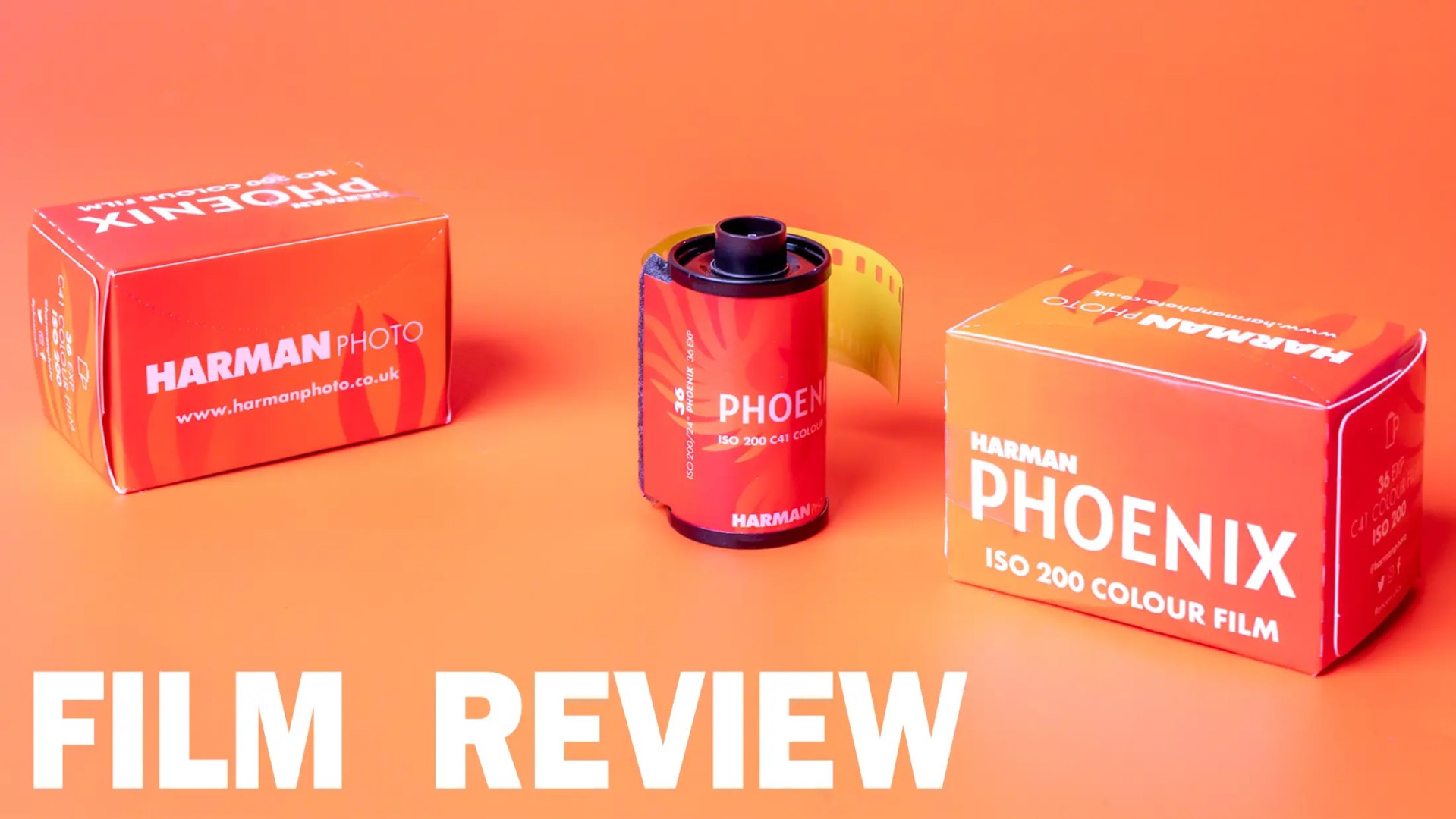By now, the secret is out. Harman has just unveiled their first new color film, Phoenix 200. I’ve known about Phoenix 200 for a bit longer than most photo nerds, given my lucky position as editor of a photo nerd site, and while the news that a new color film was being made by one of the oldest and largest producers of film was automatically exciting, I tried my best to suspend my enthusiasm until I had a chance to shoot, develop, scan, and camera-scan the film for myself.
Luckily, I didn’t have to wait. Harman sent me a few rolls of Phoenix 200 prior to its public launch, and I’ve spent the last month or so shooting the film in real-world conditions. I’ve found that the world’s newest color film is surprisingly versatile, and truly impressive as a first ever run at color film from Harman.
What is Harman Phoenix 200
Phoenix 200 is a true 200 ISO color film that can be processed in normal C41 color processing chemicals (which means that it can be developed anywhere that color film is developed). It is Harman’s first ever attempt at a color film, and the brand describes it as “experimental in nature with some quirky characteristics,” including strong, visible grain, high contrast, and unique colors. (All of this is true in certain cases, but this film also has the ability to behave quite happily as a “normal” color film – more on this later in the review.)
It can be shot at 100 or 400 ISO, though Harman advises that getting exposure just right will yield the most consistent results.
The film is only available in 35mm, though Harman says that they’re evaluating the potential of color film in other formats, such as 120.
The film will be sold at “all good photo retailers around the world,” and Harman is targeting a retail price of $13.99 USD excluding tax, £12.99 GBP including VAT, and €15:49 Euro including tax, though these prices are guidelines and exact price may vary by retailer and country.

Why Does it Matter?
The importance of Harman producing its own color film should not be under-estimated.
For years, film photographers have relied almost entirely on a single manufacturer (Kodak) to produce all of the world’s color film. This has resulted in scarcity of many favorite color films, and continually rising prices. By entering the color film market, and by producing the film entirely in-house, Harman is signaling a desire to create an actual competitive market for color film, to sustainably and affordably ensure we have color film now and into the future.
It’s also worth mentioning that producing color film, even compared with the complex process of making black-and-white film, is immensely difficult, as I learned when I toured the Kodak factory some years ago. The process from start to finish requires highly specialized facilities and smart, talented people to run them. If you’ve ever wondered why the film renaissance of the last decade has seen so many new black-and-white films released compared with an almost infinitesimally few number of new color films, this is why. It’s just really hard to make color film.
What’s also worth noting is that Phoenix 200 is not just a vanity project, or a boutique film, a repackaged or rebranded film that already exists. It’s new, and it’s being made by one of the oldest and most respected names in film. For legal purposes, Harman is not allowed to sell color film under their Ilford name. But the film is being made by the same people, at the same place. The folk at Harman have as long a history in the film production industry as anyone, and they want the medium to continue long into the foreseeable future.
Shooting, Developing, Scanning, and Image Characteristics
I loaded my first roll of Phoenix 200 into a pristine Nikon N2000 equipped with a stunning 45mm F/2.8P Nikkor pancake lens, loaded my family into the car, and drove north toward Maine. When we arrived we found coastal cliffs, rustic autumn foliage, and quaint New England villages. I spent the day seeking color and light, found it, and shot it on the world’s most secret film.
I shot my film at ISO 200, following Harman’s advice that shooting at box speed would yield the best and most consistent results. I intentionally created a gamut of images (backlit subjects, frontlit subjects, high contrast scenes, low contrast scenes, low light and high key shots, etc.), and then I sent the film to the lab for processing through their Fuji processor/scanner.
The film was processed in C41 chemicals as any normal color film, and then scanned using the Fuji system’s standard correction profiles. Just as Harman told me in their literature, the scans from the lab returned punchy colors, high contrast, visible grain, and an almost cross-processed vibe. Halation occurs in backlit scenes (the famous Cinestill look), and coating anomalies are not uncommon (though Harman has said that these anomalies will be mitigated over time as they improve and refine their color film manufacturing pipeline).
Importantly, I made sure to retrieve the negatives from the lab so that I could scan the pictures through my usual process (camera scanning with Nikon’s full frame Z series camera equipped with the Nikkor Z MC 50mm F/2.8 macro lens and their dedicated ES-2 film scanning attachment). As also mentioned in Harman’s literature, this home-scanning process allowed me to achieve more “normal” looking color film images. Harman also advises that they will be working with labs over the next few months to establish recommended settings for the most common lab scanners.
- Camera scan.
- Lab scan.
- Camera scan.
- Lab scan.
[ABOVE a gallery of Phoenix 200 images produced by the camera scan method. BELOW a gallery of Phoenix 200 images produced by the Fuji lab scanner.]
As we can see in the above galleries, Phoenix 200 can have something of a split personality.
When scanned by the lab, images are indeed punchy, grainy, and high in contrast, as Harman advised they would be. Of course, the heavy contrast, cross-processed look is certainly interesting and unusual, and I’m sure that many photo nerds will appreciate (even seek) it. To each their own!
But when scanned at home using my camera scanning method (and with Lightroom edits), the images are far more reasonable and natural, with colors that are truer to life, restrained contrast, and less visible grain. By adjusting in Lightroom, it’s possible to make images from Phoenix 200 look many different ways. Until Harman issues guidelines to labs that will result in the film being processed in a less garish way, I will personally be opting out of lab scans and handling things in-house.
We can see the halation that they mentioned in their literature. It appears much like it does with Cinestill’s films, as red halos surrounding extremely bright points of light. It looks neat. Some people will love it.
As for the rest, Phoenix 200 behaves much like other 200 ISO films. It’s not a fast film, and requires ample light to expose proper images. My photos made indoors with an F/2.8 lens show motion blur and decreased detail. Faster lenses or a flash are required for indoor spaces or low light shooting.
My takeaway, when speaking specifically to the shots that were scanned by my camera, is that the images are lovely. There’s good detail in shadows and highlights, and the colors are well-balanced. I like what I see!
Final Thoughts
The fact that Phoenix 200 exists at all is a great thing. Too long have film photographers been limited in the color film market. We need new color film manufacturers, and Harman is answering the call.
In Phoenix 200 we have a fun, interesting, and enticing new film. It’s a color film that has a distinctive and energetic look when processed and scanned at the local lab. When scanned at home, it’s a film that affords flexibility and quality.
The marketing behind Phoenix 200 tells us that this is a big deal, that the film symbolizes a rebirth of sorts, a rising from nothing, a new beginning. If that is indeed the case, if Phoenix 200 is just the start of a healthy new product line of color films from Harman, I’m excited. Time (and the market) will tell. ∎


 Follow Casual Photophile on Youtube, Twitter, Facebook and Instagram
Follow Casual Photophile on Youtube, Twitter, Facebook and Instagram
[Some of the links in this article will direct users to our affiliates at B&H Photo, Amazon, and eBay. By purchasing anything using these links, Casual Photophile may receive a small commission at no additional charge to you. This helps Casual Photophile produce the content we produce. Many thanks for your support.]

























It’s great to see an actual new colour film being, er, developed. All the current repackaging of existing stock – which I don’t mind as long as it keeps film available – tends to contract not expand the market.
I’ll be buying this the moment my local gets it.